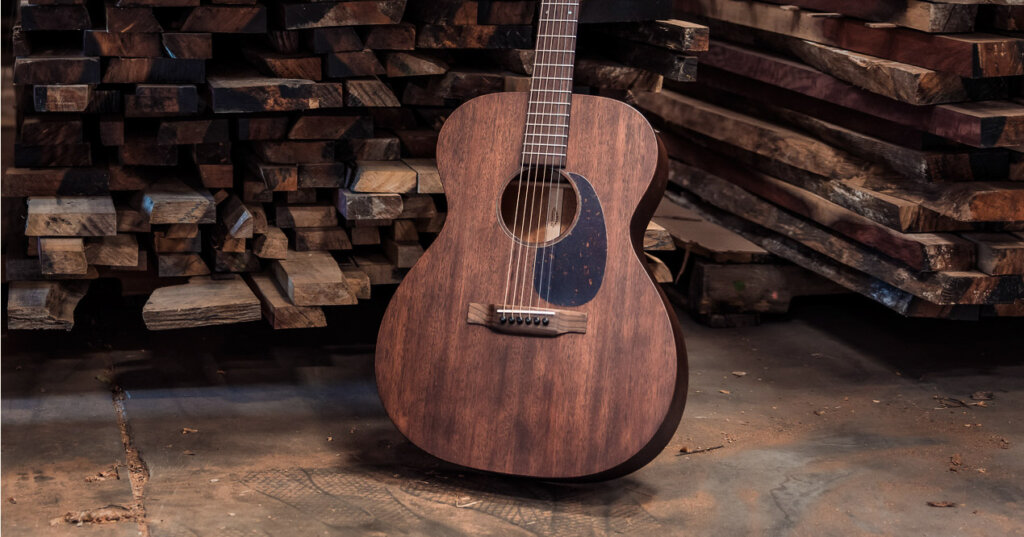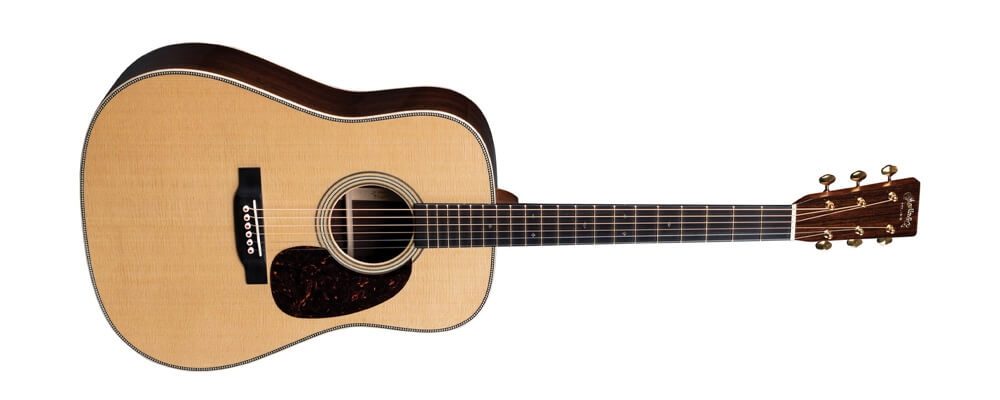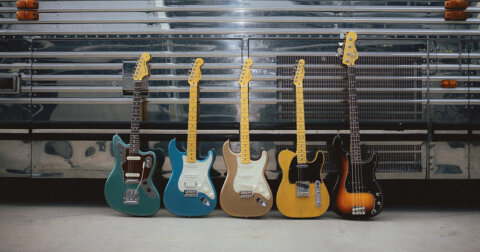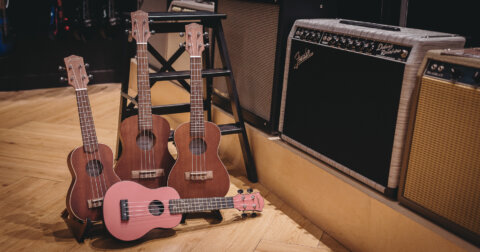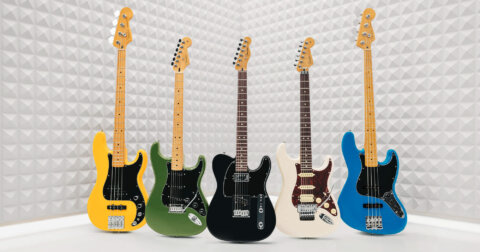Pull up a chair – let’s explore the world of acoustic guitars for new players.
There’s no denying it: the acoustic guitar is a masterpiece of musical craftsmanship. Over hundreds of years, this humble stringed instrument has evolved into a variety of shapes and styles, each with its own voice. Whether you’re drawn to folk, rock, or fingerstyle, there’s an acoustic guitar waiting to become your companion.
But with so many options, choosing your first guitar can feel like navigating a maze. Fear not – we’ve crafted this guide to simplify your journey. Let’s dive into the essentials every beginner guitarist should know.
Types of Acoustic Guitars
Acoustic guitars aren’t one-size-fits-all. Subtle design differences shape their sound and playability, so it’s worth understanding your options before splashing out. Here are the variants you should be familiar with:
Nylon-String Guitar
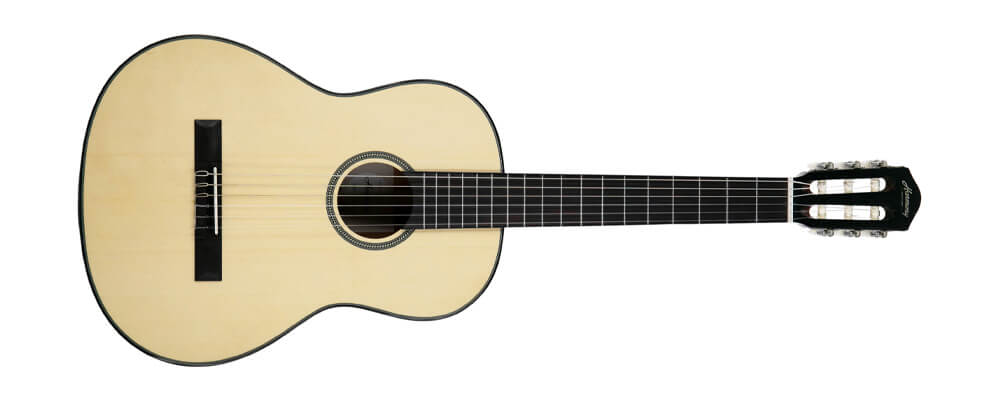
Steeped in history, nylon-string guitars (often called classical guitars) produce velvety, rounded tones – just imagine the warmth of a crackling fireplace. While synonymous with Spanish flamenco or intricate fingerpicking styles, don’t underestimate their versatility. Artists like Yngwie Malmsteen, Jason Mraz, and many other iconic musicians have woven these guitars into their most influential music.
Nylon-string guitars haven’t been as popular as their steel-string counterparts. But if you’re a first-time player or buying for children, they’re really worth considering. This is because nylon strings have lower tension than their steel-string counterparts when tuned up to pitch. This feature, combined with the gentler touch of nylon, makes the learning process a whole lot easier for unacclimatized fingers.
What to expect:
- Softer tension strings on nylon string guitars = kinder on tender fingertips
- Wider necks on nylon string guitars accommodate fingerstyle learning
- Ideal for younger and beginner players or for those who prefer more delicate playing styles
Steel String Guitar
Mention the word “acoustic guitar” and the steel-string acoustic guitar is what most people imagine! A staple in genres from Oasis’s Wonderwall to Ed Sheeran’s ballads, steel-string acoustics offer bright, loud tones perfect for solo play or band settings.
Strum one, and you’ll notice two things – their vibrant sound and the firmer fretboard feel. Steel’s higher tension means tougher fingering (compared to nylon), so prepare for calluses!
Their versatility lies in varied body shapes and bracing patterns, making them popular in country, bluegrass, and fingerstyle (think Sungha Jung or Tommy Emmanuel). They’re also favoured by singer-songwriters for their rich EQ range, which complements vocals beautifully.
What to expect:
- Louder projection for strumming or solo performances
- Firmer strings (hello, finger stamina!)
- Endless body shape variations: Dreadnought, Parlor, Jumbo, and a whole lot more
Electro-Acoustic
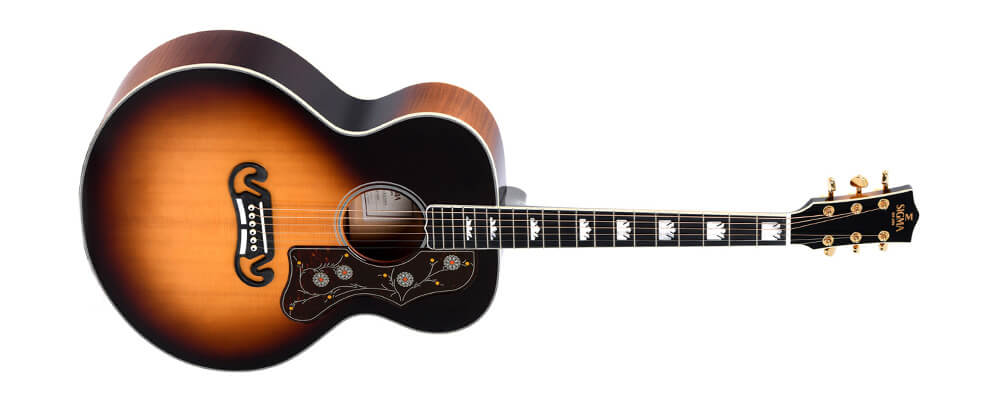
Ever seen a busker with an acoustic guitar performing on a busy street and wondered how they managed to be heard over all the hustle and bustle? The power of electro-acoustics is at play! While these guitars aren’t a different “type” of acoustic per se, it’s something worth mentioning to newcomers to the guitar world.
Traditional acoustic guitars rely on their hollow bodies to naturally project sound – think of it as an organic, wood-crafted amplifier. But even the most resonant guitar has its limits; playing to a packed pub or festival crowd demands more volume than raw acoustics can deliver. That’s where the electro part of electro-acoustics come in.
Hidden beneath the surface, pickups (like piezo sensors or magnetic systems) capture string vibrations, letting you plug directly into PA systems or dedicated acoustic amps. Suddenly, your unplugged strumming transforms into a sound that fills rooms – no shouting over the mix required
Electro-acoustics aren’t just for live gigs. Skip the fuss of mic placement and room acoustics by connecting straight to an audio interface. Your guitar’s signal flows cleanly into recording software (DAWs like Logic or Ableton), bypassing background noise and studio headaches. It’s studio-ready sound with the ease of an electric guitar setup.
Acoustic Tonewoods You Should Know
Since acoustic guitars serve as their own amplifier, much of their sonic qualities come from, you guessed it right – wood! Admittedly, while there are other factors that influence the overall sound of the acoustic guitar (bracing, string composition/gauge, body shape, material composition etc.), woods are one of the largest influencers of tone.
Here is a brief overview of what tonewoods are commonly used on acoustic guitars:
Spruce
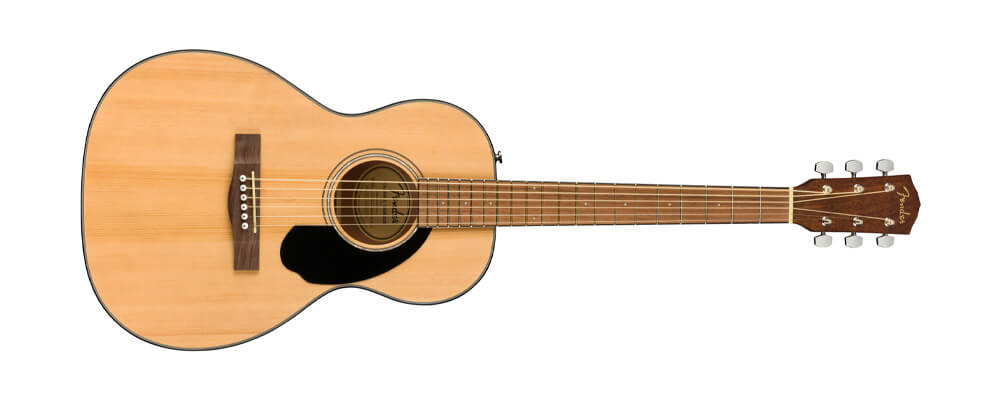
A top choice for crafting guitar soundboards (the wood panel with the soundhole), spruce dominates the acoustic world for good reason. This lightweight yet stiff tonewood acts like a sonic springboard – its rigid structure channels string vibrations with precision, delivering bright, articulate tones that cut through a mix. While adored by strummers and vocalists for its crisp projection (perfect for campfire singalongs or studio tracks), spruce’s dynamic responsiveness also wins over fingerstyle players. Its ability to balance delicate plucking with powerful resonance makes it a versatile pick for everything from folk ballads to complex solo arrangements.
Cedar
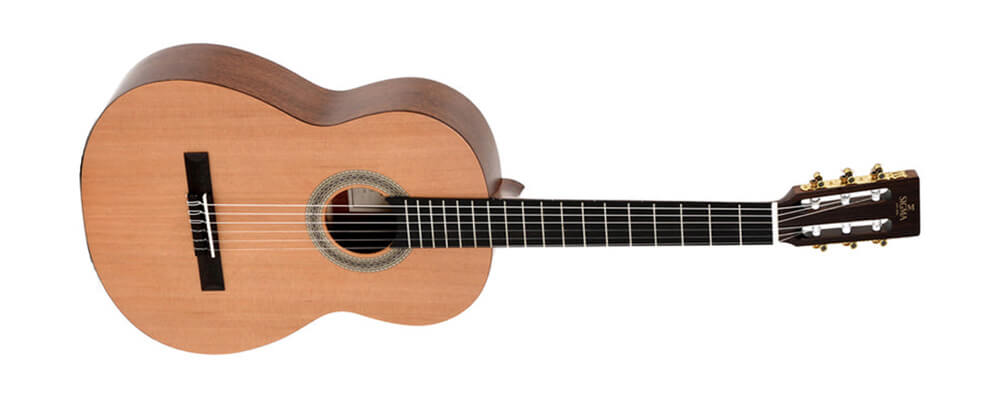
Sharing spruce’s lightweight rigidity, cedar is a favoured soundboard wood with a distinct sonic identity. Where spruce sparkles with crystalline highs, cedar wraps notes in a cosy, balanced warmth. This tonal character, paired with its immediate responsiveness, creates a sonic playground for detail-oriented players. Fingerstyle musicians relish its ability to articulate intricate patterns, while flat-pickers harness its quick attack for bluesy licks or folk melodies that demand note-by-note clarity.
Mahogany
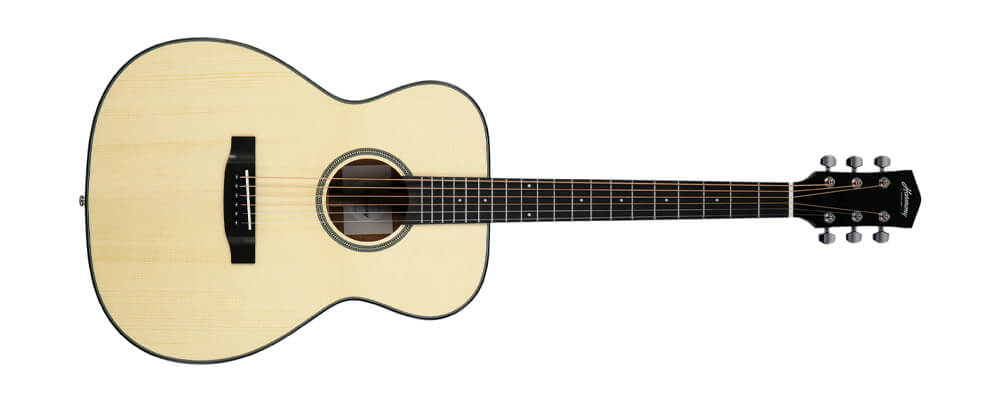
Mahogany defies simple categorisation – uniquely straddling roles as both a soundboard and back/side wood. As a top, its denser structure (relative to spruce or cedar) generates a punchy, mid-forward growl that defined the gritty charm of Delta Blues-era guitars – think raw emotion with every strum.
Yet as back and sides, mahogany reveals a different persona. Its responsive nature amplifies the guitar’s voice with a halo of harmonic richness, grounding the sound with earthy lows while letting highs shimmer warmly. This duality makes it a chameleon – equally at home in bluesy slide work, folk rhythm grooves, or fingerpicked melodies craving depth.
Rosewood
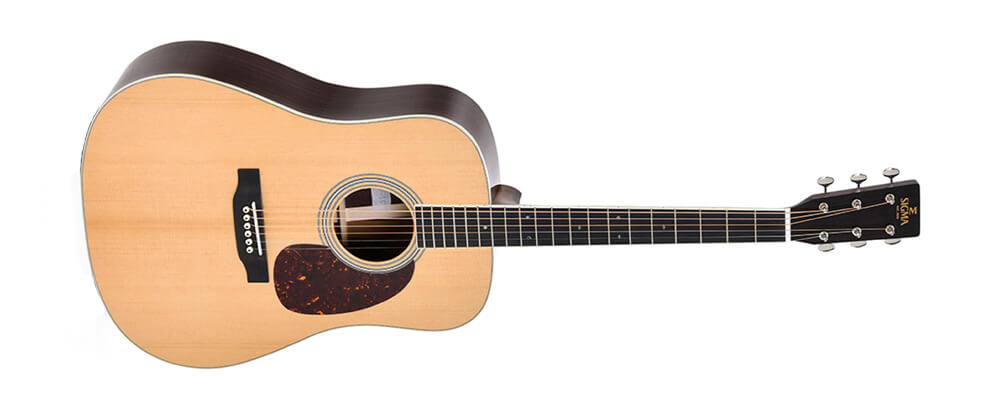
Closing our exploration of tonewoods, rosewood reigns as the connoisseur’s choice for fretboards and back/sides. This dense, dark-hued wood brings a touch of luxury to acoustics, crafting a soundscape defined by thunderous lows and a shimmering tapestry of overtones. Its depth and harmonic richness make it the perfect partner for spruce tops, creating a marriage of clarity and resonance – the kind of articulate, full-spectrum sound you’d hear on stage or in studio recordings.
P.S. Woods on the acoustic guitars can be made from either “solid” or “laminated” woods. You’ll see solid wood constructions on higher-end acoustic guitars.
How much should you spend on a beginner acoustic guitar?
It is the perennial question of our existence, how much should I shell out for an acoustic guitar for beginners?
There are great guitars at any price range. But the old adage “you get what you pay for” rings true here as well. Perhaps the best way to decide is to ask yourself a series of questions about what your expectations are.
What are your goals with your first acoustic guitar? Do you plan to upgrade sooner or later? What features are you looking for? Are you just playing at home or are you planning to perform? These are just some of the questions to ask yourself in order to find a gauge of how much you should spend.
A good, well-made guitar inspires you to play more
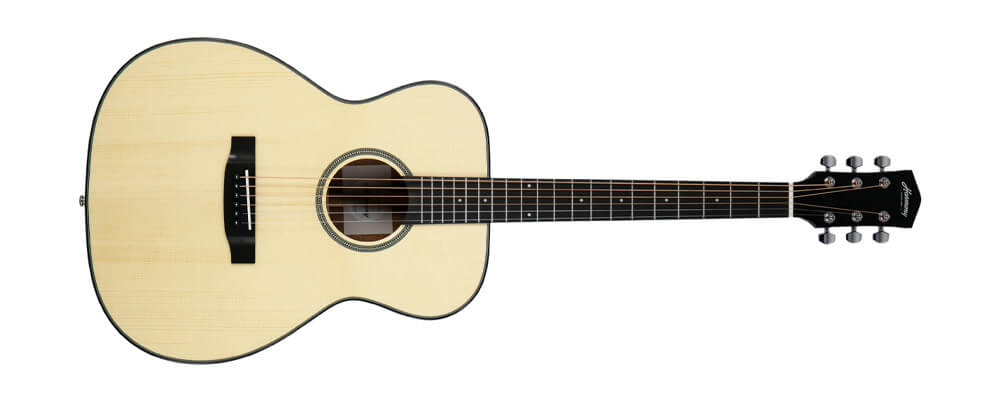
Of course, the worries of “what if I lose interest?” and “I’m just trying it out first” will tempt you to buy the cheapest guitar possible. But this is exactly what you don’t want to do. The cheapest guitars tend to have cut-corner construction and quality. As a result, the acoustic guitar becomes uncomfortable and difficult to play. Your practice sessions will end up being a discouraging and unfulfilling experience.
Our advice? If you’re serious about learning and getting somewhere with the acoustic guitar, go for the best instrument that you can afford!
What to look out for?
Now that you’ve heard basically all you need to know about the woods and types of acoustic guitars, here are some important things to keep an eye out for when looking for the best acoustic guitar for beginners.
Get ready for action
No, we’re not talking about guitar moves. The action we’re talking about refers to the height of the strings or the distance between the strings and the fretboard. Too high action means you will need a lot more pressure to fret a chord. If you’re just starting out, it’s best to find a guitar with low action. Not only does it help with your playing comfort but fretting notes and chords will also be a lot easier.
Size
If it isn’t already apparent, acoustic guitars come in many different shapes and sizes. The classic Dreadnought is the most common size for an acoustic but it might be too big for some people. Instead, smaller-sized guitars like a Parlor are ideal for the more petite players to hold, grip, and play.
While smaller acoustics may be a breeze to play, they may feel awkward if you’re a bigger person. In this case, you may feel more at home with a Jumbo or a Grand Auditorium. It’s all about seeing which shapes hug your body the best when you’re in your preferred playing position.
However, acoustic guitar shapes and dimensions also play a part in shaping the sound of the acoustic guitar. So if there’s a sound you’d like to get from an acoustic, you may have to make some concessions to comfort. So choose wisely!
Don’t Forget Personal Preference
Finally, amid all the considerations about woods, shapes, and tones – don’t underestimate the importance of choosing a guitar that you like.
While the sound and comfort aspects are definitely things you should look at, picking something that you simply like is the way to go. You can even look at your favourite artists as inspiration for getting the sounds that you like – after all, they’re probably the reason you are pursuing your musical muse!
Just like the hardest choices in life, you can get advice to make the most informed decision. But the only person that can make the right pick for you is yourself. So if you find an acoustic that strums on your heartstrings, don’t let anyone talk you out of it.
After all, the best acoustic guitar for beginners is the one that you’re excited to play and learn on.
That’s about all you need to know if you’re looking to find the best acoustic guitar for beginners. Trust us, the journey you’ll take with the acoustic guitar is a road full of fun and gratification. While it might be challenging at some points, it will be thoroughly rewarding.
Dawsons stocks a comprehensive selection of acoustic guitars for all types of players. Head down to our store to give these acoustic guitars a gander. That’s the best way to find out if the acoustic guitar is right for you.
You can also head over to our online store to check out our collection of acoustic guitars for beginners. If you need any more advice on choosing the perfect acoustic guitar for beginners, feel free to contact us and we’ll help you out!
More guides on gear for beginners: Finding the Perfect Beginner Electric Guitar
